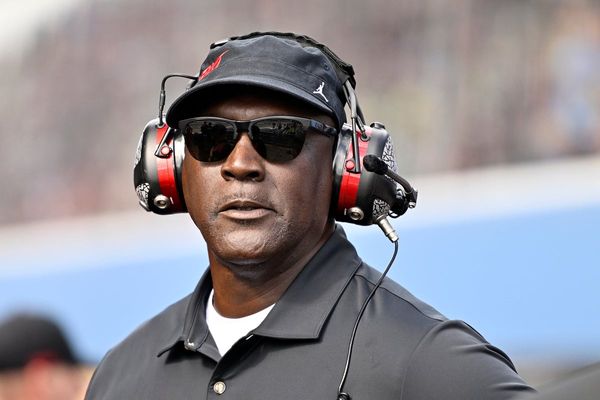Fake blood, a fatality and three seriously injured victims at a chaotic scene greet trainee intensive care paramedics and trainee retrieval doctors in Alice Springs.
The training exercise for the St John trainees and retrieval doctors from the Medical Retrieval and Consultation Centre also showcases the skills of Northern Territory Fire and Emergency Services members and the SES.
Intensive care paramedic from the southern critical response unit based in Central Australia, James Rowland, said it was vital for all emergency services to train in simulated scenarios.
"We're doing intensive care paramedic (ICP) training for the 2022 Northern Territory ICP course, in combination with MRaCC (Medical Retrieval and Consultation Centre) retrieval registers training as part of their Central Australian Retrieval Training course," he said.
The training starts with the first of three scenarios — a mock car accident.
"There will be one mannequin and two real people simulating crash victims," Mr Rowland said.
"The mannequins are great but they don't provide realism to the scenario and can't talk back."
Mr Rowland says it is important for the paramedics and the registrars to work with real people acting as victims.
"They can see them breathe. They can see their skin colour. They can see them talk. They can see them scream," he said.
Another vital ingredient is experienced people playing the victims.
"They're aware of the pre-hospital environment, how patients behave in traumatic scenarios," he said.
'Make noise, be annoying and obstructive'
Alice Springs paramedic Paul Neil played one of the victims in the mock crash.
"I was acting that I had a spinal injury and needed to be removed from the car," Mr Neil said.
"I was simply told to make a lot of noise, be annoying and be obstructive."
His "act" is not uncommon for the scenario.
"Car crashes are very distressing for everyone involved and the level of panic and anxiousness from the people in the car crash, can obviously link to those feelings," he said.
Mr Neil said he learned something from being on the receiving end of care in the crash simulation.
"I think that there's quite a lot of noise," he said.
"There's quite a lot going on that you tend to drown out when you're the one actually making the noise."
Communication between agencies
Dr Warren Adie, an emergency physician with the Alice Springs Hospital for the retrieval service and the Medical Retrieval and Consultation Centre (MRaCC), helped coordinate the exercise.
"As doctors in the hospital, we don't get much exposure to the pre-hospital medicine environments," he said.
"It's through training like this, that we actually get that exposure."
Dr Adie said seeing what other agencies did was important.
"It gives us the opportunity for our doctors to get an understanding of what they're capable of, what their scope of practice is, what they can and can't do.
"The biggest thing is learning about communication. How important good, clear, concise, complete communication is amongst all these agencies."
Dr Adie said making the scenarios as realistic as possible through acting and using moulage or make-up to recreate wounds meant the participants became more involved in the exercise.
"You get lots of buy-in to what we call the simulation," he said.
One of the realistic props is a broken femur.
"We call this an open fracture because the (thigh) bone has actually broken through the skin.
"That will potentially bleed and a patient who is in an accident, they can bleed out and can actually die from loss of blood."
Dr Adie said the region had unique environmental challenges including "being really hot or extremely cold and distances to scene time".
"Sometimes we have to fly in a plane for an hour-and-a-half to get to the patient and manage them and then bring them back."
Dr Adie said a medical retrieval could take up to six hours.
"A helicopter could be 20 minutes in the city compared to six hours here. So that is huge."







